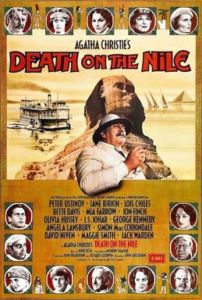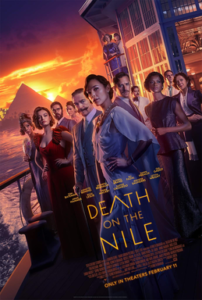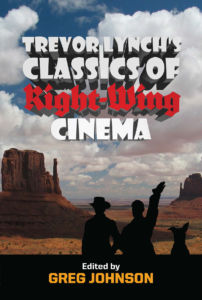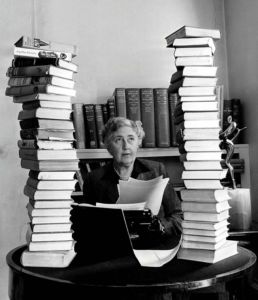Death on the Nile (1978 & 2022)
Posted By Trevor Lynch On In North American New Right | Comments Disabled1,154 words
There’s a reason why Agatha Christie is the world’s best-selling author. Her whodunnits are cleverly crafted, well-written, and highly entertaining. I also find them wholesomely Eurocentric, which is problematic these days.
Death on the Nile (1937) is one of her best novels. A shot rings out onboard a luxurious Nile steamer. It is clearly a case of foul play. But the two prime suspects have airtight alibis. Moreover, practically everybody else on the ship had means, motive, and opportunity to do the deed. Even Hercule Poirot’s famous gray cells are baffled . . . for a time.
The almost perfect crime is cleverly constructed, and its unravelling is profoundly satisfying. Thus it is little surprise that Death on the Nile has been adapted twice for the big screen, first in 1978 then again in 2022. A comparison of the two films makes shockingly clear how far and fast our culture has declined in the last few decades.
Death on the Nile (1978) was a mainstream, big-budget, all-star film directed by John Guillermin. In the gritty, grubby, sleazy seventies, Guillermin’s Death on the Nile looks like a throwback to an earlier age of filmmaking, with its long running time, leisurely pace, beautiful orchestral score by Nino Rota, highly literary dialogue (in English, German, and French), and lavish period costumes and settings. (The film won the Oscar for costume design.)
Peter Ustinov is the best Hercule Poirot ever, softening the character’s arrogance and priggishness with warmth and French Belgian urbanity. Mia Farrow is both beautiful and compelling as Jacqueline de Bellefort. Simon MacCorkindale is a strong Simon Doyle. Lois Chiles is strikingly beautiful as Linnet Ridgeway, but her voice is flat and her acting wooden. She’s really the only weak link, though.
Other outstanding cast members include David Niven as the dashing Colonel Race (complete with sword cane), Bette Davis as American heiress Mrs. Van Scuyler, Maggie Smith as her nurse Miss Bowers, Angela Lansbury as romance novelist Salome Otterbourne, Olivia Hussey as Salome’s daughter Rosalie, and Jack Warden as Dr. Bessner.
 [2]Guillermin largely shot Death on the Nile on location in Egypt and makes very effective use of ancient monuments, Nile landscapes, and local color. The actors must have been troupers, since during filming temperatures reached 130 degrees Fahrenheit. Most of them seem to be enjoying themselves, especially David Niven and Peter Ustinov. The script by Anthony Shaffer drops a few minor characters from a crowded cast but remains faithful to the spirit and complex plot of Christie’s novel.
[2]Guillermin largely shot Death on the Nile on location in Egypt and makes very effective use of ancient monuments, Nile landscapes, and local color. The actors must have been troupers, since during filming temperatures reached 130 degrees Fahrenheit. Most of them seem to be enjoying themselves, especially David Niven and Peter Ustinov. The script by Anthony Shaffer drops a few minor characters from a crowded cast but remains faithful to the spirit and complex plot of Christie’s novel.
There are a few flaws.
Guillermin could have tightened the scenes in which Poirot imagines how different people on the boat might have committed the first murder.
The only touch of seventies cinematic sensibilities is an excess of blood. It is a lapse of taste.
There are also continuity problems. The boat journey where most of the action happens starts at Aswan, headed south to the Sudan. A day later they arrive in Luxor, more than 400 miles to the north, where they visit the temples of Karnak and Luxor. Dr. Bessner confuses Luxor Temple with Karnak Temple. Then Simon and Linette announce at Karnak that they are headed off to see the Temple of Abu Simbel that afternoon. That would be more than 600 miles back up the Nile, south of Aswan. Then Dr. Bessner conflates the Temple of Abu Simbel with the Colossi of Memnon, which are just on the other side of the Nile from Luxor. Finally, the boat trip ends in Wadi Halfa, even further to the South in Sudan. Christie, who was married to an archaeologist and actually visited Egypt, would never have made such errors. It would have been easy enough to square the script with the map, so such sloppiness smacks of cynicism.
Although the film delivers a boatload of murder and pathos, it is leavened by wit and gentle humor, as well as the over-the-top comic relief of Angela Lansbury’s Salome Otterbourne, who — with her overcharged erotic imagination and perpetual nipping and tippling — steals every scene she is in. Bette Davis as a grande dame and Maggie Smith as her mannish nurse inevitably verge on camp, but you relish every minute of it. I. S. Johar’s Hindu buffoon Mr. Choudhury is a bit much, however. It is interesting, though, that the one non-white character added to the script is a figure of fun.
Guillermin’s Death on the Nile is a good movie, not a great one. But at least it aspires to greatness. It plays like Lawrence of Arabia when compared to the 2022 Death on the Nile, directed by Kenneth Branagh, who also plays Poirot. The movie begins with a prologue that has nothing to do with Christie. But I was even more baffled when it shifted to Christie’s novel. I didn’t recognize it at first.
 [3]The story begins in a jazz club in London. Salome Otterbourne is a middle-aged, high yella, American jazz singer. Salome is no longer a reeling drunkard and a clown. She’s a goddess, and Poirot is clearly romantically infatuated with her. (Or maybe it is just gay diva-worship. My hypothesis is that the romance in the prologue was invented solely to forestall this conclusion.)
[3]The story begins in a jazz club in London. Salome Otterbourne is a middle-aged, high yella, American jazz singer. Salome is no longer a reeling drunkard and a clown. She’s a goddess, and Poirot is clearly romantically infatuated with her. (Or maybe it is just gay diva-worship. My hypothesis is that the romance in the prologue was invented solely to forestall this conclusion.)
Rosalie Otterbourne is Salome’s coal-black niece and sassy manager. We first see her showing the honky who owns the club who’s boss. Later, she too is upheld as a goddess and worthy marriage partner . . . for a wealthy white man . . . in the 1930s.
Other cast members have been diversified as well. Linnet Ridgeway is played by Israeli actress Gal Gadot, who does not hold a candle to Lois Chiles in the looks department and is scarcely better as an actress.
American lawyer Andrew Pennington, played by George Kennedy in 1978, has become an Armenian named Andrew Katchadourian, played by an Indian Muslim named Ali Fazal. Somehow this Armenian is actually Linnet’s cousin. When the Armenian gets off the boat at the end, he makes a comment about the prejudices he faces as a brown man carrying a gun. This is in Egypt, mind you.
Mrs. Van Schulyer is played by Jennifer Saunders and Bowers by Dawn French. In this adaptation they are both lesbians, something Maggie Smith’s Bowers only tastefully hinted at.
Even ostensibly white characters act black. Simon Doyle and Jacqueline de Bellefort are introduced on the dance floor at the club, twerking and grinding. Later, there’s more twerking and grinding with Simon and Linnet at the Temple of Abu Simbel.
 [4]
[4]You can buy Trevor Lynch’s Classics of Right-Wing Cinema here [5].
The fact that the Abu Simbel scene was shot on a soundstage even allowed Branagh to rework the colossal statues of Ramesses II — with his thin lips and aquiline nose — to look a bit like George Floyd.
Christie’s central plot is still intact, but it is scarcely possible to enjoy it. Everything about this film, save the handling of the final gunshot, is inferior to the 1978 version. The cast, performances, sets, and costumes are lackluster. The whole film was shot on soundstages, and looks it. The pervasive wokeness is ham-fisted and vulgar. The disgusting Negro-worship is just BLM-era cinematic reparations. But this film doesn’t fail through accident and oversight. It is relentlessly purposeful, meticulously constructed, and entirely cynical anti-white garbage.
At one point, I had the wicked thought that Branagh was actually adapting Christie’s biggest seller, Ten Little Niggers (1939), now published under the less problematic title And Then There Were None. But there are no blacks in Ten Little Niggers — at least until Branagh gets his hands on it.
* * *
Like all journals of dissident ideas, Counter-Currents depends on the support of readers like you. Help us compete with the censors of the Left and the violent accelerationists of the Right with a donation today. (The easiest way to help is with an e-check donation. All you need is your checkbook.)
For other ways to donate, click here [6].
